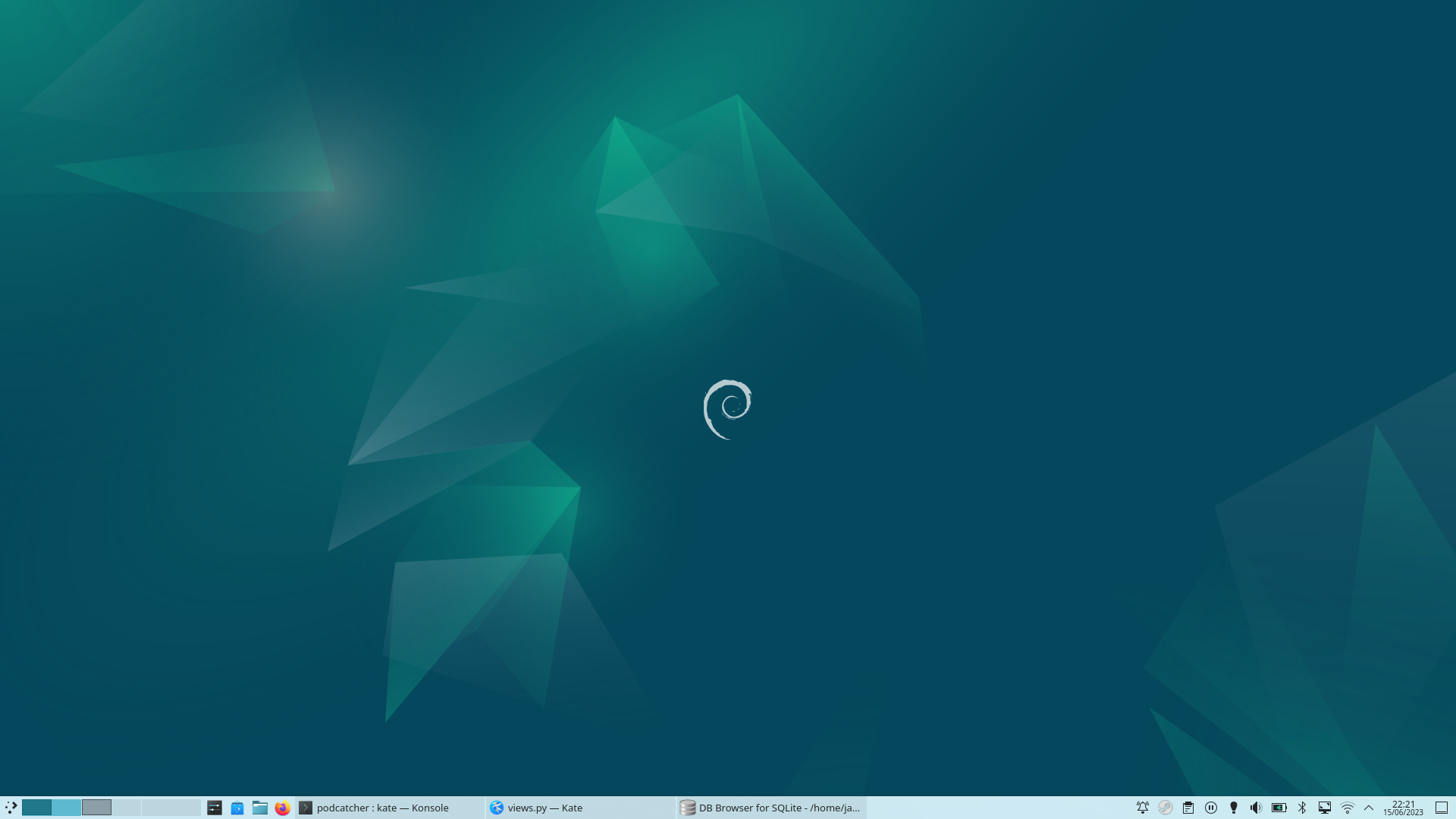Debian 12 'Bookworm' was recently released, and a number of different factors aligned that made me decide to give it a go.
Switching
It's been a number of years since I daily drove a Debian, but it's a distro that I've always had a soft spot for. Back at university I interned at a company where a number of employees were contributors to the Debian project, which at the time I was enamoured by. I respected their Linux expertise and no-nonsense approach to system administration, something I feel is reflected in the Debian culture.

The distribution itself has a reputation for rock solid stability, historically not great for users that want the latest and greatest features, but ideal for being predictable, staying out your way and allowing you to get work done.
I've always had the sense that if I really wanted a reliable, non-thrills desktop that I was confident would work for years to come I'd definitely consider either Debian for personal use. Perhaps if I was installing something for a family member I'd consider something like Linux Mint. But for myself, I'm easily distracted and chronically addicted to new shiny things so rarely stick with one distribution for extended periods of time.
Saying Farewell to Open SUSE 🦎
I was previously using KDE plasma desktop on Open SUSE, a rolling release distro that includes all the latest and greatest packages. With the latest release of Debian 12 the stars aligned perfectly it includes the latest (at the time of writing) KDE Plasma version 5.27.5, identical to what I was using on SUSE. This also represents the latest major release of KDE plasma version 5 before KDE plasma 6.
Below is a quote taken directly from the KDE Plasma 5 schedule
The current LTS release is Plasma 5.27.
This is the last Plasma 5 release and will receive bugfixes only, no new features. The bugfixes are intended to continue being integrated into 5.27 until a first version of Plasma 6 can be released (and might continue longer).
I'm hoping this means I'll continue to get the KDE experience I've grown accustomed to for the foreseeable future without having to worry about potential breakage of unstability introduced by KDE Plamsa 6 (Something I'd potentially more likely to encounter sticking with Open SUSE)
For the most part my experience using Open SUSE was positive. I was pleasantly surprised by the stability of a rolling release desktop. However I occasionally ran into issues with conflicting packages, with no clue how my system managed to end up in such a state and unsure what actions to take to resolve said conflicts.
Furthermore, using Open SUSE was a departure from what I'm more familiar with. Historically I've mostly used Debian or Ubuntu based distrubtions, as such I'm much more confortable using apt compared to tools like zypper or yast.
Impressions
I think it's a huge improvement that Debian is including non-free firmware (where required) in the official installation media. I remember the days where Wi-Fi on my old thinkpad didn't work post-installation until I'd enabled some non-free sources. This kind of stuff is just user hostile (especially for beginners) and I feel this will really help adoption.

In terms of the desktop experience I really appreciate that Debian provides a very vanilla experience out of the box. Similar to the approach I've seen Fedora take, there's no major attempts customize any of the desktop environments they ship.
Enabling flathub and install packages from flathub means my setup now feels 100% identical on the surface, the only difference being the underpinnings of the distribution. I think this speaks to one of the main advantages of Debian in the current ecosystem. When combined with flatpak you get the best of both worlds: a rock solid distrbution base and (potentially) the latest and greatest versions of popular applications via flathub.
Issues
The only one issue I had was getting video capture working with pipewire in OBS Studio. After trying both the .deb version and flatpak I was unable to add my desktop as a screen capture source, resulting in the following warning in the logs:
warning: [pipewire] Failed to start screencast, denied or cancelled by user
After a lot of googling it turns out I just needed to install an extra 'metapackage' pipewire-audio https://wiki.debian.org/PipeWire#Installation which I guess it not included by default when using KDE plasma.